- Home
- ILIL ARBEL
Madame Koska and Le Spectre de la Rose
Madame Koska and Le Spectre de la Rose Read online
MADAME KOSKA
AND LE SPECTRE DE
LA ROSE
By Ilil Arbel
Copyright © 2017, Ilil Arbel
Published by the Angela Thirkell Society
The Angela Thirkell Society
North America
PO Box 1376
Southeastern, PA 19399-9002
First Published 2017
All rights reserved and remain with Ilil Arbel, printed by permission. Except for review, no part of the publication may be reproduced or transmitted in any form or by any means, electronic or mechanical, including photocopying, recording, or any information retrieval system without permission from the author. Contact the Angela Thirkell Society, PO Box 1376, Southeastern, PA 19399-9002 for additional information, or email [email protected] to contact the author.
LIBRARY OF CONGRESS
CATALOGING-IN-PUBLICATION DATA
ISBN - 978-0-9768345-2-6
1. Title. Madame Koska and Le Spectre de la Rose
2. Author. Ilil Arbel
www.angelathirkell.org
With many thanks to Louanne M. Wheeler for her invaluable editing and proofreading, and to the wonderful people who have done so much to encourage me as I plunged into the dangerous water of murder and mayhem – Sunny Gwaltney, Kathleen Fish, Barbara Houlton, and Penelope Fritzer.
Also by Ilil Arbel
Madame Koska and the Imperial Brooch
Miss Glamora Tudor!
Their Exits and Their Entrances
The Cinnabar Box
The Lemon Tree
Maimonides: A Spiritual Biography
Witchcraft
On the Road to Ultimate Knowledge
Anunnaki Ultimatum: End of Time
Ancient Aliens
Myth and Environment
Favorite Roses
Favorite Perennials
Amazing Plants
Medicinal Plants
Favorite Wildflowers
CONTENTS
Preface
Introduction to Madame Koska’s First Adventure
Introduction
Chapter One
Chapter Two
Chapter Three
Chapter Four
Chapter Five
Chapter Six
Chapter Seven
Chapter Eight
Chapter Nine
Chapter Ten
Chapter Eleven
Preface
On behalf of the Angela Thirkell Society of North America it is my honor and pleasure to introduce this wonderful book by Ilil Arbel. Ms. Ilil Arbel is the author of a variety of books including works of fiction, satire, biography, nature and scholarly studies. In addition, she has contributed four (including this book) wonderful works to the Angela Thirkell canon including two books continuing Mrs. Thirkell’s work in a unique way by writing about a character introduced in the Thirkell novels but never appearing in them – Ms. Glamora Tudor. Glamora Tudor is Mrs. Thirkell’s satiric avatar of a movie star of her times and is often discussed in the Barchester novels although she never appears in person. Ms. Arbel’s works bring her to life, along with existing characters in a delightful and insightful way that sheds light on the existing characters and novels while giving Ms. Tudor a true character of her own. The other works are the two mystery novels starring Madame Koska, the character Mrs. Thirkell’s character Mrs. Moreland made her living writing about.
All of these works bring immense pleasure to the lovers of Angela Thirkell and serve as a continuation and reminder of her world and her work. Their uniqueness lies in the intrinsic value of the writing and plotting which makes them stand alone as absorbing reads, combined with their close connection to the originals which gave them birth. As a lover of Angela Thirkell I was initially skeptical about the Glamora Tudor works but found them to be not only worthy of continuing Mrs. Thirkell’s work but a glorious gift to those of us who mourned the end of her writing once we had read all of the existing novels. In short, Ilil has given us the gift of new pleasures combined with old loves and for that we are eternally grateful.
Whether you are a fan of Angela Thirkell or just a lover of a beautifully written mystery, you will enjoy this book.
Sunny Gwaltney
Secretary of the Angela Thirkell Society of North America
Introduction to
Madame Koska’s First Adventure
Dear reader: you don’t have to read this introduction if you have already read Madame Koska and The Imperial Brooch. If you have never read it, this may give you an idea of how it all started.
In the beginning, Anthony Trollope created Barset and Barchester.1 And he saw that they were good.
Five great tomes had been writ, and he was labouring on the sixth, when a dreadful calamity befell the mighty author. As he sat meditating at the Athenaeum Club, a conversation between two clergymen reached his ears; they were disparaging the beauty of his creations, calling his Barchester characters tired and over-familiar. Great rage seized the literary giant. He rose from his seat and strode toward the offending vicars. “I shall not write another Barchester novel,” he thundered. “And the anger of my readers will follow you unto the seventh generation, since it was your doing and yours alone.” Pale and frightened, the clergymen begged him to reconsider, fearing for their very lives. He refused. “At least finish the novel you are creating now,” said one of them, trembling like a leaf, “Or you will be our death.” Trollope’s kind heart relented a little, and he promised them he would finish that novel, but no more. “You shall not perish,” he added, “but the book will be named The Last Chronicles of Barset.”2 And so it came to be. The mighty author moved on to the political novels, and never returned to his beloved Barchester, which is a great pity since I would have liked to read more about Signora Neroni and the rest of the Stanhope family.
Time passed and Barchester could only be visited through the six portals of the great novels. And then, in the early thirties, a brave clergymen whose name was Ronald A. Knox, moved to create more Barchester stories. One great tome of short stories named Barchester Pilgrimage had been writ, and he saw that it was good.3
Silence reigned again until the descendant of other mighty authors and artists, Angela Thirkell, returned to Barchester through her many novels about the descendants of the characters introduced by Trollope. No need to go any further since every single person reading this introduction knows her. Hopefully, they also know my books, Miss Glamora Tudor! and Their Exits and their Entrances. They were bundled under what I hoped was the significant name of The New Chronicles of Barset.
These books were about Glamora Tudor, the legendary actress who never comes on stage in any of the Angela Thirkell books, but whose presence permeates the very atmosphere of Barsetshire with its “It” factor. I made her come on stage in Glorious Technicolor, and that, apparently, became a precedent. It was determined by the Powers Who Should Remain Nameless that it would be a nice idea to bring to life another character for whom we had been given only tantalizing glimpses…
So here she is. Madame Koska, the elusive, enigmatic, undefeatable Madame Koska, who can solve a crime and run an establishment of magnificent haute couture with equal success. We know she is the regular heroine of our beloved Mrs. Morland, but that is almost all we know. What is her first name? Who was M. Koska? Where did she learn her trade? It must be Paris but she has a Russian name… where does she get her lovely mannequins? Does she smoke a cigarette stuck in a long ebony cigarette holder? Does she really look the way I imagined her, Maggie Smith while in her late forties or so? She never has to age, even if I write a book a year… after all, Bertie Wooster did not age over his forty years of
glory… So many questions, and they all have to be answered on the run, since she is busy solving the very first Madame Koska mystery in the very first Madame Koska novel. The year is 1921 (calculated since Laura Morland started writing while still educating her older three children, about 12 years before High Rising, which was published in 1933).
And who is really writing it? Is it me, Ilil, aka Mrs. Morland? Is it Mrs. Morland, aka Mrs. Thirkell? I am getting a headache… but it’s a small price to pay for the privilege of being the alter ego of an alter ego… strange and wonderful. I sincerely hope you enjoy it, because I am afraid that if I don’t go on and write a book a year, Mrs. Morland might be upset… or Mrs. Thirkell… and they will stop channeling me! We can’t have that!!!!
* * *
1 I sadly realize it does not have the same thunder as “the Heaven and the Earth” but we are not Yahweh…
2 Okay, so the story is slightly embellished. The overhearing itself is definitely true.
3 Well, maybe “good” is a strong word. The stories are pretty boring, but at least someone tried.
Introduction
This book is Madame Koska’s second adventure. She will once again design haute couture at her London atelier while engaging in sleuthing and catching evil-doers on the side. It is not necessary to read the first book, since each story stands alone, but it may be useful to give some information about the era, the styles, and the characters. If you prefer, however, you can certainly skip the introduction and dive into the plot. Personally, I have the terrible habit of reading a book first and the introduction last, since I greatly fear some secrets would be revealed, but I assure you, in this introduction I am very careful not to give you even a hint.
The book is fiction; these exciting events never happened. However, some of the organizations, and several characters as well, were based on historical material which I found fascinating and wanted to discuss. Besides, I suspect that if I don’t confess, some astute readers would catch me and complain that I am deceitful and not to be trusted; I might as well come clean right away.
Several “regular” characters existed in Madame Koska and the Imperial Brooch, and are fictional. Those based on historical figures are:
Sasha Danilov – Serge Diaghilev
Tanya Lavrova – Anna Pavlova
Monsieur Bex – Léon Bakst (only mentioned in passing)
Victor Parizhsky – Vaslav Nijinsky
Galina Danilova – Tamara Karsinova (though Karsinova never married Diaghilev)
Michel Fokine is recognized as the choreographer but does not appear in the book.
While taking plenty of liberties, I based the Ballet Baikal on the sparkling, magical Ballets Russes. If I could indulge in time travel, I would visit some of their performances and videotape them. Since as far as I know, time travel has not yet been invented, I looked for a link to some performances of Le Spectre de la Rose. Unfortunately, there are no recordings of any performances by Vaslav Nijinsky and Tamara Karsinova, but at least these videos are faithful to the original Fokine’s choreography, and the costumes are Léon Bakst’s amazing designs. The music is the “Invitation to the Dance” by Carl Maria von Weber. You can link to the video at https://www.youtube.com/watch?v=DBm8Kcr9FrQ
L’Après-midi d’un Faune
Vaslav Nijinsky choreographed and danced this famous and controversial ballet with Diaghilev’s full approval. Many of us are so familiar with it that we do not realize how revolutionary it was; the first performance created an uproar. Nijinsky had previously scandalized audiences with what they perceived as gross indecency; come to think of it, he had a reputation for shocking even his greatest admirers. But never before had he done something so extreme. It is not clear if Diaghilev knew what Nijinsky planned to do at the end of the show or even if Nijinsky planned it at all. He was already mentally unstable at the time, and so it could have been spontaneous. I suspect that Diaghilev did know and that he trusted that the sophisticated Parisian audience and critics would not bat an eyelash. He was mistaken.
To begin with, this was no classical ballet. The stage and the dancers looked like a Greek bas-relief slowly coming to life. Most of the dance was performed in profile, so the classical “positions” were eliminated. The scenery and costumes by Leon Bakst were gorgeous, but there were no tutus and not even toe shoes. The ballerinas floated about barefoot in delicate and revealing dresses and diaphanous veils. The Faun wore tights that were patterned after a dappled horse, decorated with vine clusters, and a wig with short horns. The eerie, sensual music by Claude Debussy increased the audience’s discomfort.
The simple storyline is based on Greek myths and lacks a plot. The nymphs appear, dancing together and playing. The Faun observes them, proceeds to chase them, and finally tries to seize one. The nymph manages to evade him, and runs away, leaving her veil behind. The disappointed Faun climbs a cliff, lies down on the veil, and becomes immobile. The curtain falls.
Except that on that first performance in Paris, Nijinsky did not remain immobile. As he lay down on the veil, he started moving in a blatantly sexual way. After a short, horrified silence, the audience jumped to their feet, climbed on their chairs, and began screaming, hissing, and protesting; some tougher souls laughed, whistled, and applauded. It was pandemonium.
But no one could beat Diaghilev for a cool head in an emergency. As always, he knew exactly what to do, and gave an order to repeat the ballet from beginning to end. The audience calmed down and watched for the second time – and the show ended with huge, unanimous applause. Victory for Diaghilev?
Not yet. The next day, the great critic Gaston Calmette wrote a scathing article in Le Figaro newspaper; he accused Diaghilev not only of immorality but of presenting an artistically inadequate performance. It is worth quoting some of it:
“Anyone who mentions the words 'art' and 'imagination' in the same breath as this production must be laughing at us. This is neither a pretty pastoral nor a work of profound meaning. We are shown a lecherous faun, whose movements are filthy and bestial in their eroticism, and whose gestures are as crude as they are indecent. That is all. And the over-explicit miming of this misshapen beast, loathsome when seen full on, but even more loathsome in profile, was greeted with the booing it deserved.”
Calmette was answered by the famous sculptor, Auguste Rodin, who not only loved L’Après-midi but was also a personal friend of Diaghilev. The controversy spread, and Paris was divided into two camps. The newspapers went on with many articles – and the result was a huge financial success for that season, since everyone had to see it.
Researching the Internet, I saw that there was a video claiming to show Nijinsky dancing L’Après-midi d’un Faune. I could not believe such luck, since it is well known that Diaghilev did not permit filming Nijinsky, ever, under any circumstances. But here was this strange black and white video, and I watched with baited breath. Something was wrong, though, and when I looked further, I realized that unfortunately, this was not a real filming. The video is a modern work of combining still photographs and making them move to the glorious sound of the Debussy piece. I must add that the photographer was perfectly honest about his technique, no attempt was made by him to trick the public. It was disappointing, but nevertheless, the imagery is fantastic and enjoyable, and certainly worth pursuing. Here is the link to several interesting videos, including one which is a stunning mix of Vaslav Nijinsky and Rudolf Nureyev.
http://tinyurl.com/n4kceov
Anna Pavlova
When Pavlova first auditioned in 1899 at the Maryiinsky Theater at age eighteen, the famous ballet master Marius Petipa could not believe his own eyes. He later said that throughout his entire long career, he had never seen a ballerina perform quite like Anna Pavlova. He hired her on the spot and felt his action was justified since she became an overnight success. Pavlova went with Petipa to many countries in Europe, became the Maryiinsky’s prima ballerina, and everyone expected her to stay there for her entire career.
But
Pavlova had little loyalty to her old benefactor. In 1909 she unexpectedly joined Serge Diaghilev’s Ballets Russes and went to Paris with him. She was as great a sensation there as Vaslav Nijinsky. There is almost a mythical element in the story. How could the two greatest ballet dancers of all time be at the same place and the same time? How could such a coincidence happen? It seems impossible – and yet it did.
Pavlova did not return to Russia but did not stay with Diaghilev, either. This seemingly delicate creature had a mind of her own, and she would not have anyone manage her career and dictate to her when and where she would dance; Diaghilev was too domineering despite his charm, and wanted everything done his way.
She became a nomad and traveled all over the world on her own. She appeared before royalty but did not disdain modest dance halls, either. While royalty admired her, she also performed at second-rate theaters, sometimes as a part of a show that included jugglers and animal trainers. No matter what the stage, she always danced as if possessed by a power higher than herself, and the audience would gasp at the dark, exotic elf that seemed to make time stop as she danced. She made the dance look so easy, as if it cost her no effort at all. No one guessed that her muscles hurt constantly and that she had herself wrapped with tight bandages when she was not dancing. Her name was recognized in every continent.
In 1931 Pavlova planned to dance her famous solo of “The Dying Swan” at a royal command performance for the Queen of Belgium. Usually, a woman her age would be considered too old for a ballerina; most dancers stopped performing in their forties. But her power and magic did not diminish with age, and she had continued to dance. The Queen and audience looked forward to her appearance. However, a few days before the performance, the theater manager received the shocking news that Pavlova had died suddenly in The Hague, on her way to Brussels.
The performance was not cancelled, the theater was full, and even the Queen attended. When the time for Pavlova’s solo came, the orchestra played the music for the Dying Swan, and a single, pure white ray of spotlight moved over the dark stage, following where Pavlova would have been moving as she danced. The Queen and the entire audience rose to their feet, and their eyes followed the white light until the end of the piece. An eerie tribute, fitting for the magical dancer.

 ANCIENT ALIENS: MARRADIANS AND ANUNNAKI: VOLUME ONE: EXTRATERRESTRIAL HOLIDAYS
ANCIENT ALIENS: MARRADIANS AND ANUNNAKI: VOLUME ONE: EXTRATERRESTRIAL HOLIDAYS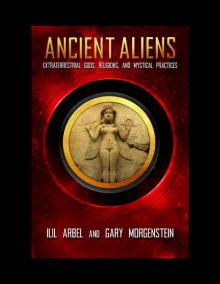 Ancient Aliens_Marradians and Anunnaki_Volume Two_Extraterrestrial Gods, Religions, and Mystical Practices
Ancient Aliens_Marradians and Anunnaki_Volume Two_Extraterrestrial Gods, Religions, and Mystical Practices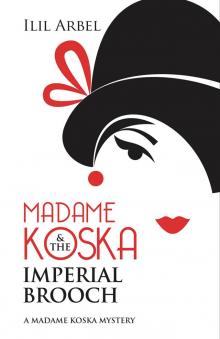 Madame Koska & the Imperial Brooch
Madame Koska & the Imperial Brooch Ancient Aliens: Marradians and Anunnaki: Volume Two: Extraterrestrial Gods, Religions, and Mystical Practices
Ancient Aliens: Marradians and Anunnaki: Volume Two: Extraterrestrial Gods, Religions, and Mystical Practices Miss Glamora Tudor!: The New Chronicles of Barset: Book One
Miss Glamora Tudor!: The New Chronicles of Barset: Book One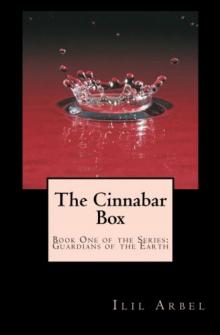 The Cinnabar Box (Guardians of the Earth)
The Cinnabar Box (Guardians of the Earth)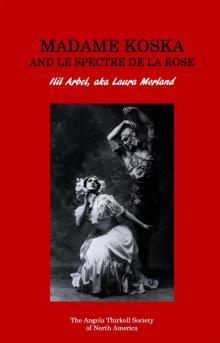 Madame Koska and Le Spectre de la Rose
Madame Koska and Le Spectre de la Rose The Lemon Tree
The Lemon Tree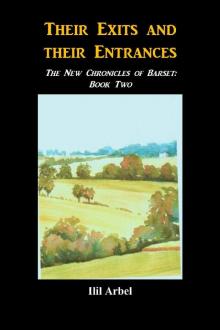 Their Exits and their Entrances: The New Chronicles of Barset: Book Two
Their Exits and their Entrances: The New Chronicles of Barset: Book Two